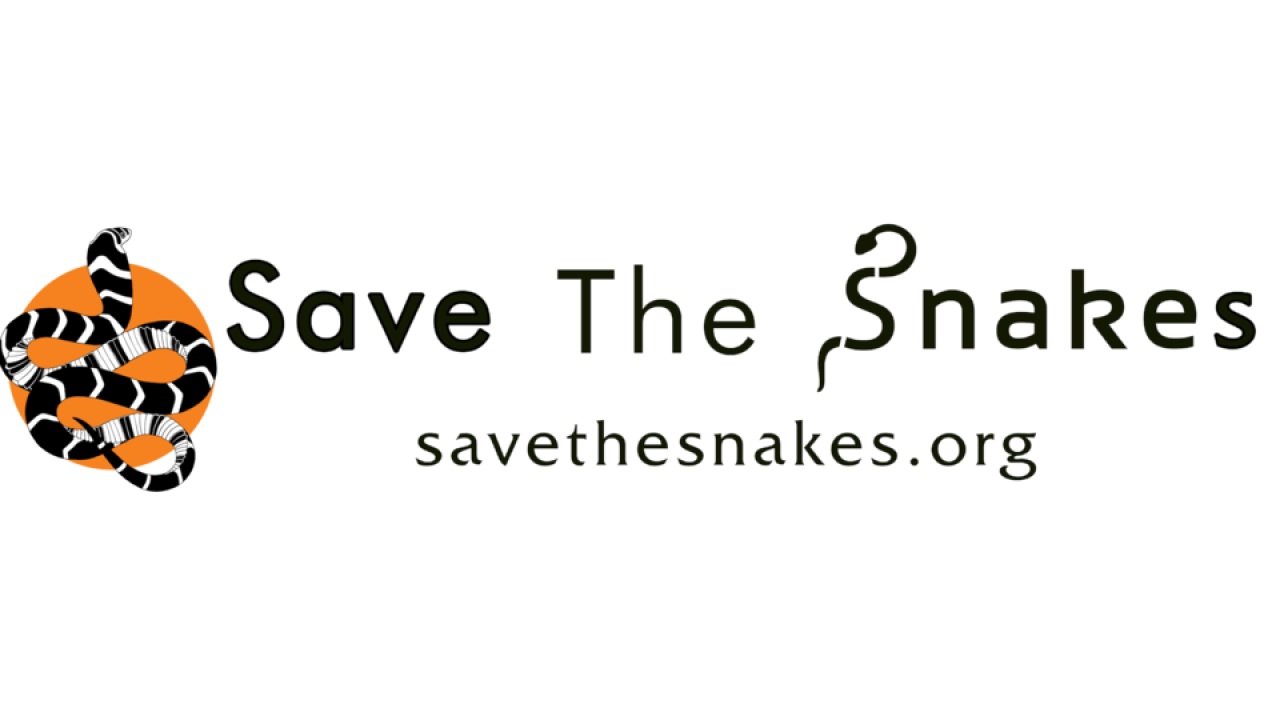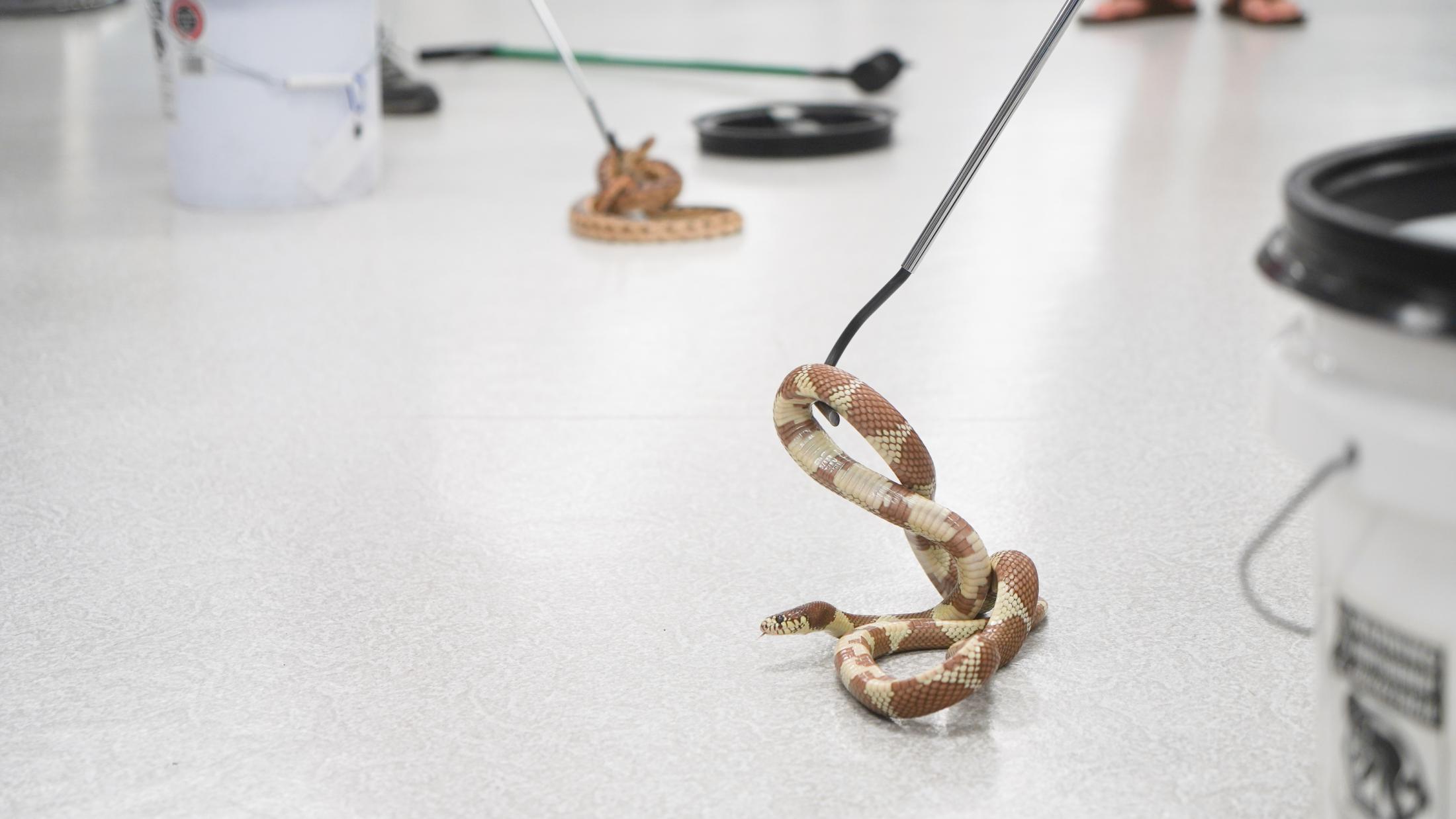
Save the Snakes @ Oilapalooza 2022!
As you may have read in Danene’s blog post last week, Oilapalooza 2022 took place October 22nd-23rd after a year-long covid delay. It was my first Oilapalooza and it is one to be remembered! Day one offered lectures, breakout sessions, and a surprise Escapely Responder Challenge Event, where I was tasked to help run the “vault” challenge. In the vault challenge, teams were given three scenarios where they needed to dress a fellow team member in the proper PPE (personal protective equipment) for the given scenario. To no surprise our participants excelled at this task!

Day two of Oilapalooza brought several workshops for our participants to attend ranging from wildlife capture techniques to snake handling. I found myself on day two as an attendee and docent of the snake handling workshop, which was instructed by Michael Starkey, founder and executive director of Save the Snakes.
Save the Snakes is a 501 (C)(3) non-profit located in Sacramento, Ca, with a worldwide reach. Their mission is dedicated exclusively to snake conservation and human-snake conflict mitigation: “Together with our worldwide network of snake conservationists, our mission is to protect snake populations around the world through education and community outreach to create a harmonious relationship between humans and snakes.”
Now back to what we learned in the workshop!
Did you know that you cannot tell the age of a rattlesnake by the number of rattles? I personally was told throughout my youth that I could, however, Michael explained to us there are many misconceptions about rattlesnakes, and this is one. Segments of interlocked rattles are keratin deposits left over from the shedding process. Rattlesnakes can shed multiple times a year particularly while they are younger and can also loose segments, so “NO” you cannot tell a rattlesnake’s age by its rattle!
You may have also heard that snakes, particularly rattlesnakes, are aggressive. We learned this is far from the truth and if anything, we should call them “defensive.” Most snake bites are accidents in which a runner, hiker or worksite worker are bitten without knowing the snake is present. Their activity, such as stepping on or lifting an item with a snake underneath, provokes the snake to strike defensively. So, what do you do if a snake bites you?
- Do your best to identify the species of snake that bit you. Take a photo of the snake if you can.
- Stay calm to keep your heart rate low.
- Remove tight fitting clothes and jewelry.
- Slightly elevate or place the bitten extremity in neutral position.
- Mark the bite site and note the time you were bitten.
- Monitor for severe allergic reactions (increased risk if you have previously been bitten).
- Contact 911 and local poison control.
- Go to the hospital, even if you haven’t yet developed a reaction. Do not delay!
Following these steps will greatly increase your odds of a full recovery from a venomous snake bite. But also make sure to be aware of the don’ts to snake bites such as do not apply a tourniquet, ice, orally suck the bite wound, use a mechanical suction device or use pain medication.
After we learned the dos and don’ts, we moved on to familiarization with snake handling equipment, such as: hooks, tongs, snake bags, transport containers, and snake gaiters. With proper familiarization of the equipment under our belts, in came the snakes! Sadly, due to UC Davis policy no rattlesnakes attended the workshop, however two docent animals were in attendance: a gopher snake and a king snake.

Now came the opportunity to practice proper handling of the snakes with the snake hooks. Along with placing into and removing the snakes from a 5-gallon transportation bucket, the most important things learned were: never get complacent, and always use your tools to help open and close the bucket (if you use your hands, you have more of a chance of the snake being able to strike at you!).
Overall, the snake handling workshop was a great success and many thanks to Michael Starkey for putting on two back-to-back snake workshops. Also I am very thankful to our network attendees for asking questions and being hands-on during the workshop.

Thank you for reading,
Danny Vickers
Care Facilities Specialist

